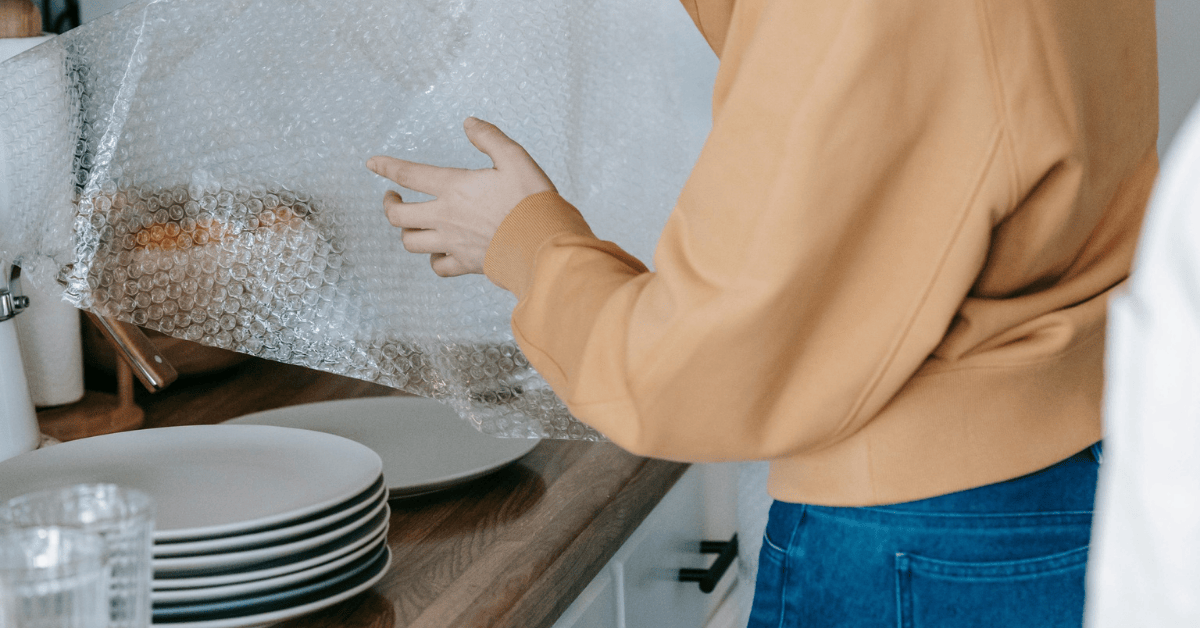How to Pack Dishes for Moving: A Comprehensive Guide to Safe Transport

Moving is a complex process, and the thought of packing fragile dishes can often add to the stress. After all, dishes are notoriously prone to breakage during a move, making their safe transport a top priority for homeowners. However, packing dishes doesn’t need to be an overwhelming task. With a bit of planning and the right packing techniques, your dishes can be easily protected and transported to your new home without incident.
In this guide, we’ll walk you through the steps of packing dishes effectively, ensuring your cherished dishware arrives safely at your new destination.
Essential Supplies for Safe Dish Packing
Before diving into the packing process, make sure you have the right tools for the job. Protecting your dishware starts with having the proper packing materials, as these will make all the difference in ensuring your items arrive intact. One key aspect of packing fragile items is filling any empty spaces within the boxes to minimize movement and prevent damage in transit. This is where packing paper and other cushioning materials come into play, acting as your best allies in safeguarding your dishware. So, let’s gather these essential packing supplies before we begin:
- Dish boxes: These sturdy boxes are specifically designed for packing dishes and offer extra protection compared to regular boxes. If you don’t have dish boxes, any medium or small-sized box will do.
- Packing paper: A generous amount of packing paper is key for cushioning and protecting your dishes. Use it for wrapping individual plates, filling gaps in the box, and creating a protective layer at the bottom of the box.
- Packing tape: Secure your boxes and bundles with packing tape.
- Bubble wrap: Optional but highly recommended for added protection, especially for delicate or valuable pieces.
- Markers: Clearly label boxes as “fragile” and “this side up.”
Get Your Dishes Move-Ready
Once you have all of the packing supplies you need, it’s time to head to the kitchen and start with the first steps. Take a look at all your dishware and determine what items will make the move with you. This is a great opportunity to declutter and part with any piece you rarely use or sets that are incomplete. Remember, less to pack means less to worry about.
Once you’ve decluttered, create a dedicated packing station on a clear, flat surface. This will make the process easier and minimize the chances of any accidental damage before you even start packing.
How to Pack Dishes for a Move: A Detailed Approach
Now that you’re prepared, it’s time for the main event: packing your dishes. This can be one of the most time-consuming parts of the moving process, as dishes are delicate and their unique shapes make them susceptible to breakage. However, investing the time to pack them properly will pay off in the end, ensuring your dishware arrives at your new home without a scratch. Here’s how to pack your dishes for maximum protection:
Padding and Wrapping Your Dishware
- Line the box: Create a cushioning base by layering the bottom of your dish box with crumpled packing paper or bubble wrap. You can also use any other item that could help minimize impact. Thoroughly reinforce the bottom of the box with packing tape to prevent it from caving in under the weight of the dishes.
- Wrap each dish: Wrap each dish individually by laying a sheet of packing paper flat and placing the dish in the center. Carefully wrap the paper over the dish until it’s completely covered. For optimal protection, repeat this wrapping process with one or two additional sheets of packing paper, ensuring the dish is well-cushioned. Secure the bundle with packing tape to prevent it from unraveling during transit. For particularly delicate or valuable pieces, provide an extra layer of protection by wrapping the entire bundle in bubble wrap.
Packing the Box Strategically
- Heavier items first: When loading the box, start with your heavier dishes, such as dinner plates and large bowls. These should be placed at the very bottom of the box to create a stable foundation. This not only helps distribute the weight evenly but also protects the lighter, more delicate items from being crushed.
- Plates vertically: After placing heavier items at the bottom, arrange your wrapped plates vertically in the box, similar to how you would load them into a dishwasher. When plates are stacked horizontally, the pressure from above can cause them to crack or break. By placing them upright, the impact is distributed more evenly, significantly reducing the risk of damage.
- Fill excess space: Once your dishes are arranged, fill any remaining gaps or voids with crumpled paper, soft cloths, or bubble wrap. This crucial step prevents movement during transit, ensuring your items stay securely in place and arrive intact.
Sealing and Labeling for Safe Transit
- Sealing the box: Add a final layer of crumpled packing paper to the top of the box, mirroring the cushioning layer at the bottom. Once the box is full, securely close it with packing tape, ensuring all flaps are tightly sealed to prevent any accidental opening during the move.
- Label box: Clearly label the box on multiple sides with the words “FRAGILE – DISHES” and add an arrow pointing upwards with the words “THIS END UP.” This will alert movers to handle the box with care and keep it in the correct orientation throughout the journey.
Specific Packing Tips for Different Types of Dishware
Kitchenware comes in all shapes, sizes, and levels of fragility, which means a one-size-fits-all approach to packing simply won’t do. While packing some items is straightforward, others, like delicate stemware or fine china, can leave you feeling a bit anxious about potential breakage. But don’t worry! We’ve got you covered with specific tips for each type of dishware so you can pack everything with confidence and minimize the risk of any mishaps during your move:
Ceramic Plates & Bowls
These items can be delicate, so double-wrap them in packing paper for added protection. Consider using cell dividers within your box to create individual compartments for each plate or bowl, preventing them from shifting and bumping against each other.
Glass Plates
Due to their fragility, glass plates require special care. Wrap each plate generously in bubble wrap, ensuring all edges and surfaces are covered. Always place glass plates vertically in the box, just like records, to minimize the risk of breakage.
Glasses, Mugs & Cups
Pack cups, coffee mugs, or glasses individually in packing paper. For added security and to maximize space in the box, you can nestle glasses and mugs together. Place smaller glasses inside larger ones, and position mugs with their handles facing inward. This interlocking method helps prevent them from shifting and colliding during transit.
Stemware
Due to its delicate stems, stemware requires extra attention. First, stuff the inside of the glass with crumpled paper to provide support. Then, wrap the entire glass, including the stem, in packing paper. For added protection, consider using bubble wrap around the stem. Place the stemware upside down in the box to minimize pressure on the fragile stem.
Silverware
To prevent scratching, bundle your silverware together and wrap them in a soft cloth or bubble wrap. You can also use plastic bags or silverware organizers to keep them neatly separated.
Pots & Pans
For pots and pans, nest them together and wrap them as a bundle in packing paper. Be sure to place packing paper between each item to prevent scratching. Additionally, use packing paper to protect lids and handles from damage.
Additional Tips for Packing Dishes
In addition to the essential packing steps outlined above, here are a few extra tips to further safeguard your dishes:
- Utilize Towels and Linens: In addition to packing paper, consider using soft towels, moving blankets, or even t-shirts to add extra cushioning and protection to your dishware.
- Don’t Overpack: Avoid packing boxes too heavily, as this increases the risk of damage. It’s better to use multiple smaller boxes than one overloaded box.
- Double Box: For extremely fragile or valuable items, consider double-boxing. Place the smaller box inside a larger one, filling the gaps with packing peanuts or crumpled paper.
- Pack Plates of Similar Sizes Together: This helps prevent smaller plates from slipping under larger ones.
- Set Aside Everyday Dishes: Before packing, designate a set of dishes to use for your meals leading up to and during the move. This will prevent you from needing to unpack your carefully packed boxes prematurely.
Protecting Your Valuables During Your Move
By taking the time to carefully pack your dishes with ample cushioning and strategic placement, you can significantly reduce the risk of breakage during your move. Remember, a little extra effort upfront will save you from the disappointment of unpacking damaged dishware at your new home.
While packing your dishes yourself can be a rewarding way to ensure their safety, we understand that not everyone has the time or resources to do so. If you’re feeling overwhelmed or would prefer to leave the packing to the experts, Armstrong is here to help. Our professional packing services can take the stress out of moving day, ensuring that all your belongings, including your precious dishes, are packed with the utmost care and attention to detail. Contact Armstrong today for a free quote and to learn more about how we can make your move easy.
